Varicose Vein Treatment: EVTA
An estimated 40 million Americans suffer from painful varicose veins. Fortunately, varicose vein treatment is easier and more effective than ever before. Only twelve years ago painful vein stripping surgeries were the norm. These surgeries involved surgically removing the vein, requiring the patient to go under general anesthesia. Vein stripping leaves problematic veins and often results in neovascularity, or growth of new veins. Vein stripping has largely been replaced with minimally-invasive EVTA procedures like laser or radio frequency ablations.
What is EVTA?
EVTA, or endovenous thermal ablation, is a minimally-invasive, outpatient procedure that uses thermal energy to close large, straight veins in the lower extremities. Like all varicose vein procedures, the problematic veins are first diagnosed using ultrasound. With ultrasound, the blood flow in the vein is measured to determine whether blood is returning to the heart properly or pooling in the legs, which is known as reflux. After the diagnosis is made the modality of treatment is selected. Large straight veins, like the Great Saphenous Vein or Small Saphenous Vein, are often ablated. Thermal energy is either delivered with a radio frequency catheter or laser fiber. The procedures for either modality are very similar, each resulting in highly effective vein treatment. Though similar in process, both modalities have advantages and disadvantages.
EVLA (endovenous laser ablation)
Endovenous laser ablation uses energy delivered through a laser fiber into the diseased vein. The day of the procedure, the patient is offered a relaxing medication like Valium or Nitrous Oxide. The leg is then prepped in sterile fashion, and the doctor gains access to the target vein using a needle, much like starting an IV. Through the needle a small wire is advanced allowing a catheter to be advanced to the top of the vein. Then the laser fiber is advanced through the catheter and placement away from deep veins is verified with ultrasound. The doctor will then infuse the area around the vein with an anesthetic mixture called tumescent anesthesia. This serves multiple purposes; to numb the surrounding area, so the heat of the ablation is not felt, to provide a heat sink so surrounding tissues are not damaged, and to compress the vein so the heat of the ablation makes contact with all of the vein wall. After the leg has been sufficiently anesthetized, the doctor will turn on the device and slowly pull the laser fiber and catheter back through the vein, burning the vein on the way out. A small bandage is then placed on the access site and a compression stocking is put on the leg, which will be worn for a week after the procedure. You are able to return to normal daily activities immediately, the only restrictions being heavy lifting and strenuous exercise. Patients report mild to moderate pain for a few days after the procedure which is well managed with ibuprofen.
Radio Frequency Ablation
Radio frequency ablation uses radio waves to generate heat to damage and close veins. The process is much the same; patients are offered a relaxing medication and the leg is prepped in sterile fashion. Using ultrasound guidance, the vein is accessed and through a small catheter the radio frequency catheter is advanced to the proximal portion of the vein. The area around the vein is then anesthetized with tumescent anesthesia to ensure the area is numb, to prevent burning of surrounding tissues, and to compress the vein. The radio frequency generator is then powered on and the vein is treated in 7 cm segments as the catheter is pulled back out of the leg. A small bandage is placed on the access site and a compression stocking is then worn for a week following the procedure. Again, you are able to resume normal daily activities with restrictions on exercise and heavy lifting for a week. An advantage of radio frequency over laser ablation is post-procedure pain. Most patients report mild pain while some patients experience no post-procedure pain. For this reason, radio frequency ablation is the preferred modality of thermal ablation used by IVC®.
Success Rates and Potential Complications
RF and EVLT treatments both have very high success rates and very low rates of complications. Radio frequency ablation has a success rate of 97% while EVLT has a success rate of 98%. Minor complications for either procedure include bruising, temporary numbness, and a sensation of tightness. More serious complications include deep vein thrombosis, skin burn, and nerve damage, though these complications are rare.
Endovenous thermal ablation is the most effective varicose vein treatment available. If you suffer from painful varicose veins, heavy or tired legs, or restless legs, let the Utah varicose vein treatment experts at IVC guide you to healthy legs!


